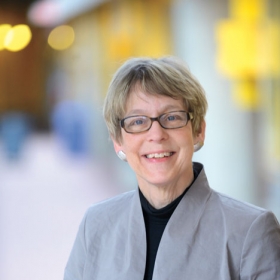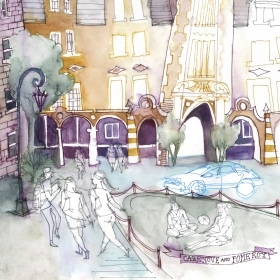Emily Buchholtz, Gordon and Althea Lang ’26 Professor of Biological Sciences, wants to change the way we look at the tree of life.

Emily Buchholtz, Gordon and Althea Lang ’26 Professor of Biological Sciences, wants to change the way we look at the tree of life. It is, she maintains, “a bush, not a tree.”
Biologists have been drawing tree-like schematics to indicate evolutionary relationships at least since Charles Darwin. Unlike genealogists, with their top-down family trees, biologists started at the bottom with the earliest organisms and branched upward—and their charts did look like trees.
The traditional scientist’s “tree of life” was typically tall and relatively narrow, especially at the bottom. Monera and amoebae were at the bottom, mammals at the top. But a younger generation of scientists have noted that in each “adaptive radiation”—each big branching of evolution that leads to a lot of other smaller branches—there’s a lot going on at first, a lot of branches appearing lower down. Modern biologists draw the “tree” as a bush, and so “A Bush Not a Tree” became the title of the Distinguished Faculty Lecture that Buchholtz gave on campus earlier this semester.
This gets to the second big point she took up in her lecture: “Complexity comes at a price.” Evolution in one direction tends to close off options in another. Some of the most highly specialized creatures, the ones most perfectly adapted to their specific micro-environment, are the ones that tend not to fare well if that environment changes—and environments are changing all around us.
The more broadly adapted creatures—cockroaches got a brief shout-out in the lecture—are arguably more successful than the “picky” ones, including any number of tropical plants and insects.
This leads to a third big idea: “biological humility.” As Buchholtz put it in her lecture, “There is no hierarchy, in a vertical sense. We are co-inhabitors.” She chafes at the idea of humans as “more complex” than other creatures. “We are not more complex. We are complex in a different way,” she says.
She amplified in an interview: “You could easily argue that there are arthropods or angiosperms or bacteria that in their way are as complex as we’d like to think of ourselves as being. We also tend to think of ourselves as being very recent innovations, that we come like the end product of this glorious tree. And in fact, all species that are alive today have essentially the same ultimate lineage, back to 4 billion years ago.”

